Tag: cabinetmaking training
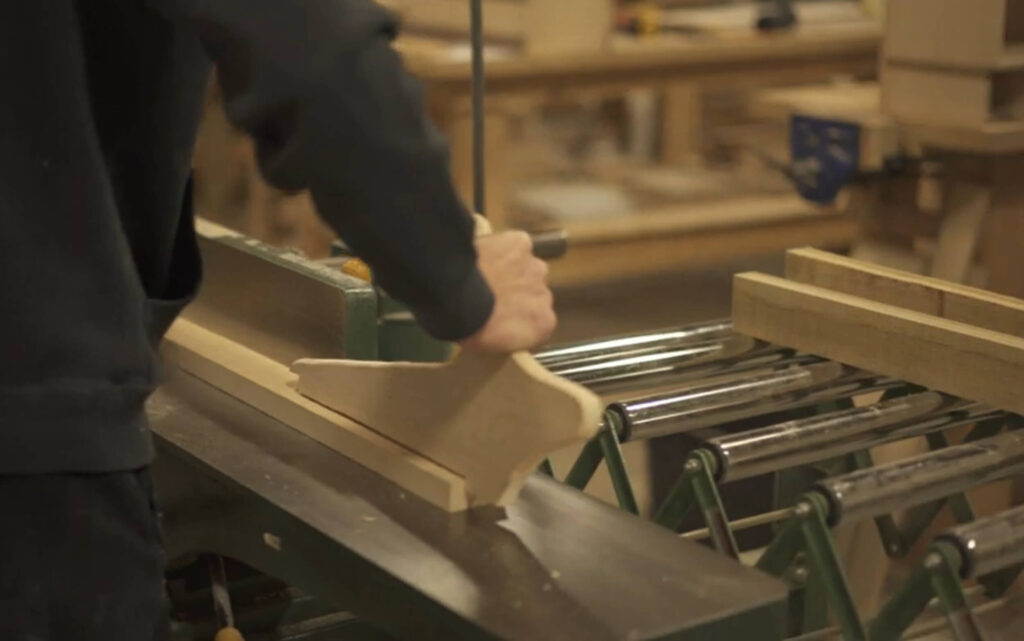
If you consider yourself a creative person, you may wonder how to channel this personal attribute into a fulfilling and lucrative career. Though plenty of planning and hard work lie ahead, it is possible to turn your dream into a reality, and we can help you!
Are you passionate about crafting beautiful, functional pieces of furniture? Do you dream of turning your love for woodworking into a profitable career? If so, cabinetmaking training at North American Trade Schools (NATS) could be your ticket to entrepreneurship. Keep reading to discover how we’ll equip you with the skills and competencies to thrive in your future entrepreneurial endeavors.
Why Cabinetmaking Makes a Profitable Business
Cabinetmaking is both an art and a science that combines creativity with precision. As a cabinetmaker, you can transform a simple piece of wood into a stunning piece of furniture that can last for generations. What sets cabinetmaking apart is the demand for custom, high-quality work.
In an era where mass-produced furniture is the norm, there’s a growing market for bespoke pieces that add a personal touch to homes and businesses. This demand presents the perfect opportunity for skilled craftsmen to establish a niche in the market. What sort of skills should you acquire to prepare for success in your future cabinetmaking business? Let’s explore!
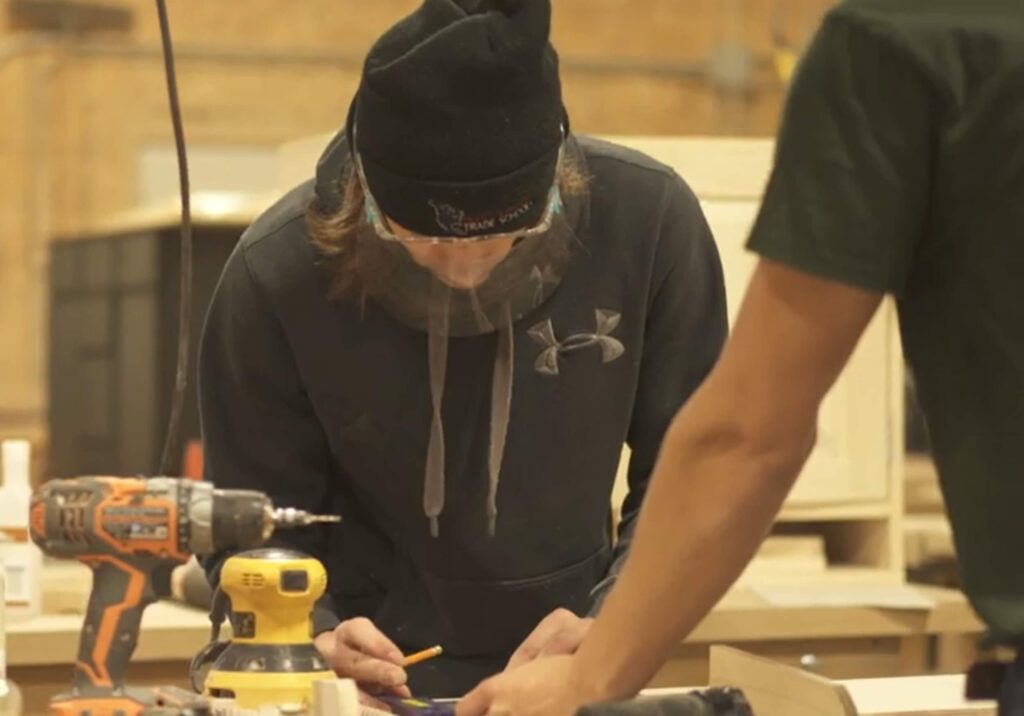
Skills You’ll Acquire in Our Cabinetmaking Training Program
At NATS, we understand that a successful cabinetmaker needs a strong foundation in technical skills and business acumen. That’s why our comprehensive cabinet making training covers everything from the basics of woodworking to advanced techniques in design and construction. Here’s a glimpse of what you’ll learn:
- Cabinetmaking Fundamentals: Master hand and power tools, understand the properties of different materials, and learn essential woodworking techniques.
- Cost Estimation: Learn how to execute your projects in an economically sound manner and how to price your services appropriately.
- Drawing and Blueprint Reading: Learn how the design of cabinets works and how to interpret and follow drawings accurately.
Turning Your New Skills Into a Career
After cabinetmaking college, you’ll possess unique skills that can be the foundation of a successful career. With woodworking, design, and construction expertise, you can offer custom-made furniture and cabinetry that stand out in a market saturated with mass-produced items.
To turn your skills into a career, start by identifying your niche: luxury bespoke kitchens, custom office furniture, or unique storage solutions. Developing a strong portfolio showcasing your craftsmanship and design capabilities is crucial for attracting clients.
Networking with interior designers, contractors, and architects can also open new opportunities. Social media and a professional website can help showcase your work and reach a wider audience. Additionally, understanding the business side, such as pricing strategies, marketing, and customer service, is essential for turning their craft into a profitable venture.
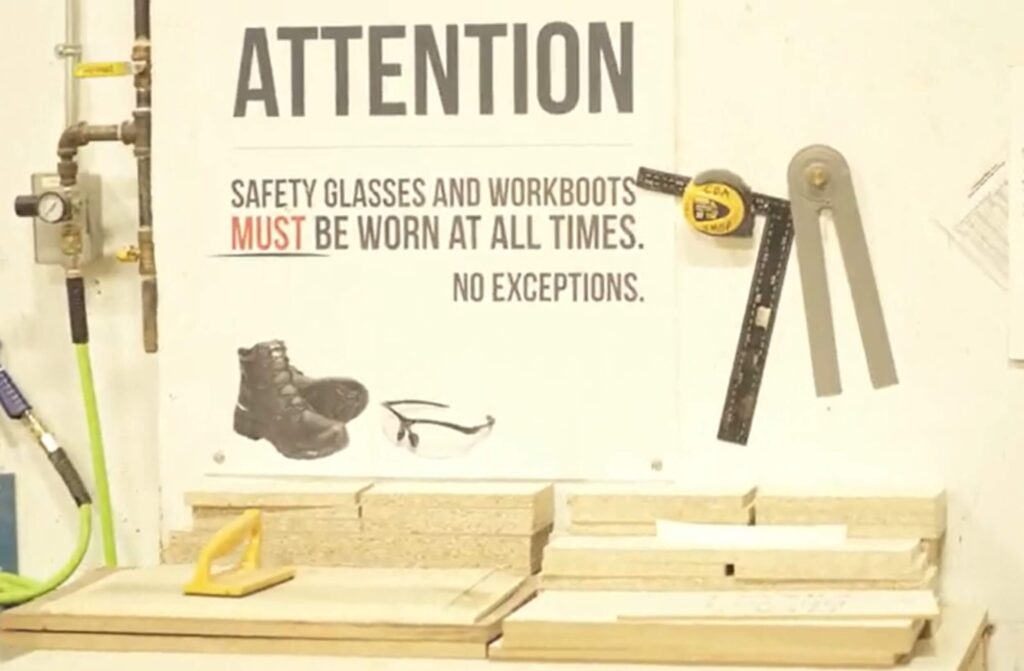
Combining your technical skills with entrepreneurial spirit allows you to create a career that fulfills its passion for woodworking and meets the growing demand for personalized, high-quality furniture and cabinetry.
If you’re ready to turn your passion for woodworking into a thriving career, NATS is here to help. Our cabinet making training can be a pathway to entrepreneurship for any student willing to use their strategizing and planning skills. With our experienced instructors, state-of-the-industry facilities, and a curriculum designed for success, you’ll be equipped to take on the world of cabinetmaking and make your mark as an entrepreneur.
Are you ready to earn your cabinetmaking diploma?
Contact North American Trade Schools for more information!
Architectural Millwork: An Intro for Students in Cabinetmaking Training
November 16, 2022
Do you love working with your hands and seeing a future for yourself in the construction industry? If so, it’s a great idea to scope out all of the career paths available to you before getting started. If it’s not on your radar yet, you should definitely consider architectural millwork. It’s a great option for those who have a creative streak and an appreciation for aesthetics. Learn what architectural millwork entails, what sort of environments you can expect to work in, and what duties and skills are required. This rewarding career allows you to take pride in your handmade creations, which will be components of buildings for years to come. Keep reading for a comprehensive guide to architectural millwork.
What Is Architectural Millwork?
Architectural millwork (often called architectural woodwork) is simply the production of different components that will be used internally and externally on architectural structures. Your projects may be purely functional, decorative, or a bit of both, depending on the needs of your company’s clients. Common project types you may encounter include wall paneling, trim, doors, casework, staircases, and countertops.
Unlike traditional millwork, wood is not the only material you can expect to work with on a regular basis, as plastic laminates could show up from time to time. That being said, there are different types of architectural millwork. Keep reading to see which one you’d prefer to pursue after cabinetmaking training.
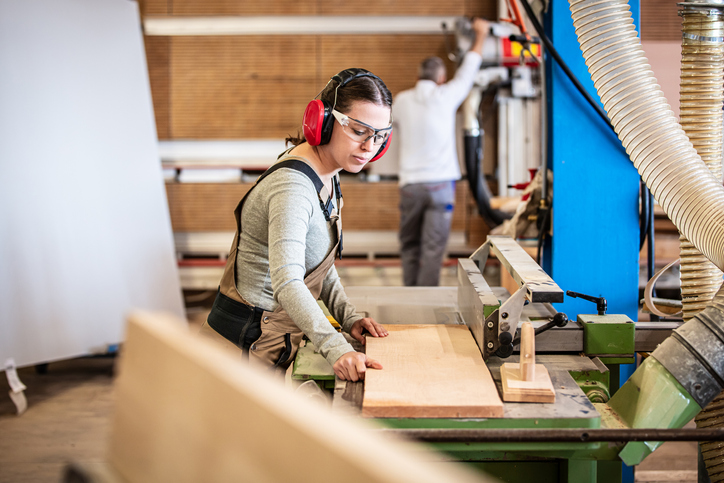
Work Environment Options to Explore After Cabinetmaking Training
There are two primary types of architectural millwork that could have you working in vastly different environments. Commodity millwork takes place in a manufacturing setting where the goal is to mass-produce pieces. Projects in this setting are usually made from cheaper materials since clients, often development companies, are looking to build as many structures as they can at the lowest possible price.
If you value workmanship over efficiency, seeking a position in a custom millwork company after completing your cabinetmaking diploma program is a great idea. In this environment, the goal will be to produce high-quality bespoke pieces for clients, and you’ll have the opportunity to perfect the artistry of your work.
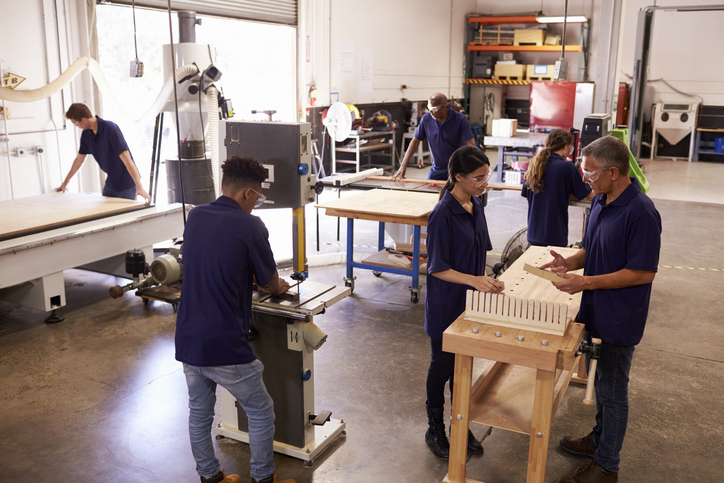
Required Duties, Responsibilities and Skills for Architectural Millwork
Effective architectural millworkers must have manual dexterity, an understanding of materials, and an eye for detail to produce excellent quality woodwork pieces. In addition, they must have the ability to work in a team with excellent communication and collaboration skills. The Cabinetmaking Training Program will prepare you to take on a position in a variety of woodworking careers. The program emphasizes hands-on carpentry, making it the perfect introduction for students interested in a future career in architectural millwork. As the development industry continues to thrive and skilled handiwork is needed, those who choose architectural millwork have a great chance of enjoying a hands-on, lucrative career.
Ready to enroll in cabinetmaking courses?
Contact NATS for more information!
How to Juggle Multiple Tasks in Your Career after Cabinetmaking Training
November 12, 2019
As you may already know, there are many elements involved in the business of cabinetmaking. You might work in a commercial setting, for a custom furniture maker or within a construction firm. Whatever the work setting is, you must be able to manage the small tasks that help you reach your main goal of making well-crafted woodworks.
If you are self-employed it will become even more important to know how to juggle tasks. You may have to set aside time to communicate with clients about future jobs, update them on current work, and invoice for completed pieces.
In any case, the need to multi-task or manage multiple jobs means that your work is in demand and that is a good thing. On top of having a positive attitude, here are a few suggestions to help you along the way.
Make Checklists
If you have done cabinet making training you will be familiar with reading blueprints, creating designs and making material lists for projects. Checklists play a similar role to these things whether you are doing one job or multiple jobs. They are a helpful way to break down a project and have been proven to reduce errors and increase productivity.

Checklists will also make sure that you provide consistent and reliable service to each client or for each job. This will put you in good standing to be recommended for more work. Also, writing a checklist will help you devise a plan by creating a work sequence or separating a job into several smaller tasks. This will keep you organized and encourage productivity by giving you a sense of accomplishment as you progress through each work day.
Know Your Limits
It is important to have a realistic idea of how much work you can do in a day, week or month. There will be an amount that you can do that will be optimal for productivity and work-life balance. Knowing your limits is also a matter of safety. You do not want to be stressed out or overtired when you are working with machinery and doing precision woodwork.
Understanding how much work you are able to accomplish in a given amount of time will also help you guarantee that your work is of the highest quality. After all, you will want to prioritize applying the skills you worked hard to develop in cabinetmaking school for each project you do.
Use The Skills from Cabinetmaking Training to Focus
If you are thinking of becoming a cabinetmaker it is likely you are creative and detail oriented. In order to maintain a high level of detailed work, it is necessary to be able to focus. Of course, your capacity to focus will be greater if you have already engaged with the other strategies mentioned above.
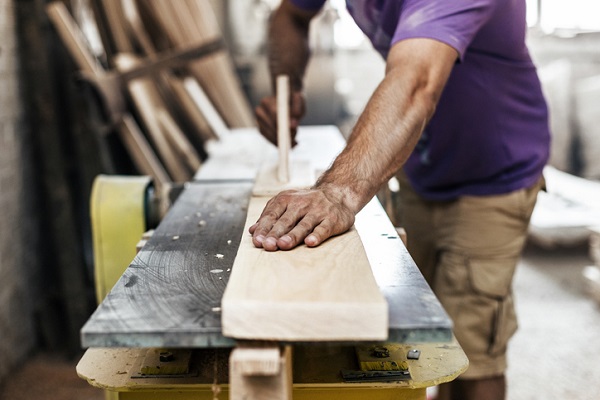
The last thing you want is to be thinking about the materials for one project while you measure and cut pieces for another project. This can lead to mistakes or lower quality work. Juggling multiple tasks means that you are able to focus on the current task because you have set up a realistic plan to get your work done. Paying attention to the work in front of you will also let you enjoy the craft and your own creativity.
Do you think cabinetmaking training is right for you?
Contact North American Trade Schools for more information.
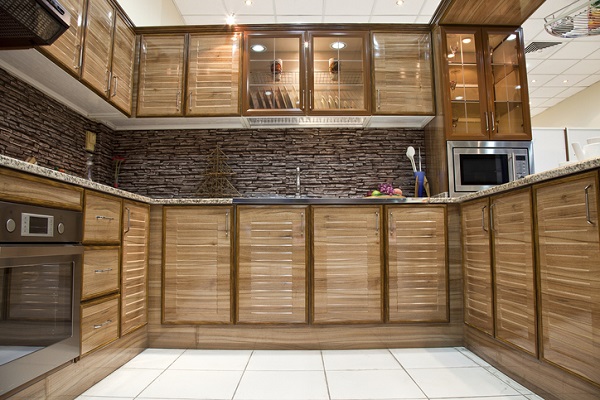
Cabinetmaking is a traditional craft, but with training and experience you will discover there is a lot of opportunity for your creativity to flourish within it. Making kitchen cabinets is one of the many ways to blend technical skills, knowledge, and personality into your cabinetmaking work.
The kitchen is one of the most versatile rooms in the house. Of course, people cook, but they also socialize, host dinners, and spend quality time with their family and friends in the kitchen. For many it is the room in the house that will be the most worn and torn.
That’s why there is a lot to think through before you start making cabinets to fit into the life of a kitchen. Here are a few tips to get started.
1. Manage Your Time and Client Expectations
After cabinetmaking school you will have a lot of opportunities to work with clients in different situations. It is always important to manage your time so that your clients know what to expect and when, but even more so if your clients are waiting to get back into their kitchen.
Discuss your plan with the client and ask lots of questions. How do they use the space? What do their dream cabinets look like? Are they looking to increase the value of their home in order to sell it in the near future? Answering these questions will help you devise a solid plan and an accurate estimate for your client so they know what to expect in terms of budget and time.
2. Use Your Cabinetmaking Training to Choose the Right Materials
An important aspect of the cabinetmaking trade is knowing how to identify and choose the right materials. Kitchen cabinet doors are sometimes made from laminate, which is a less expensive option, but it is likely you will be deciding between medium dense fiberboard (MDF), wood and plywood cabinets.

While this decision may be made by the client, with your cabinetmaking training you should be ready to give advice on their options. For example, if a client wants a stained wood look, then MDF should be avoided. But if they want to paint the cabinets a certain colour, MDF is likely the best choice. If there are any large doors in your cabinet design, it may be worthwhile to consider plywood, which is lighter and costs less than woods like maple.
Another set of choices to talk to clients about will be hardware and whether or not the cabinets will include things like a ‘Lazy Suzan’ or pantry pullouts. In all cases, make sure the hardware is durable because these are the moving parts that help keep a kitchen functional.
3. Plan an Efficient Installation
Before ordering materials take detailed notes of where things like plumbing, electrical outlets, and appliances are. Planning is essential to an efficient installation and there are cabinet making courses that include how to read blueprints and building layouts taught by experienced professional instructors.

In addition to the cabinet materials and hardware, make a plan for gaps. Walls are not always straight and floors are not always level so cabinet filler pieces or shims will come in handy. When you are ready to install, start high with the wall cabinets then move to the floor cabinets. By using a bench march and those filler pieces to keep everything on the level, you will be done in no time.
Want to learn more about cabinetmaking school?
Contact North American Trades School for more information!





